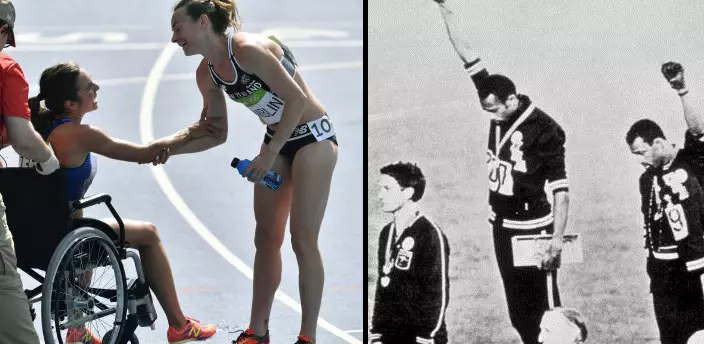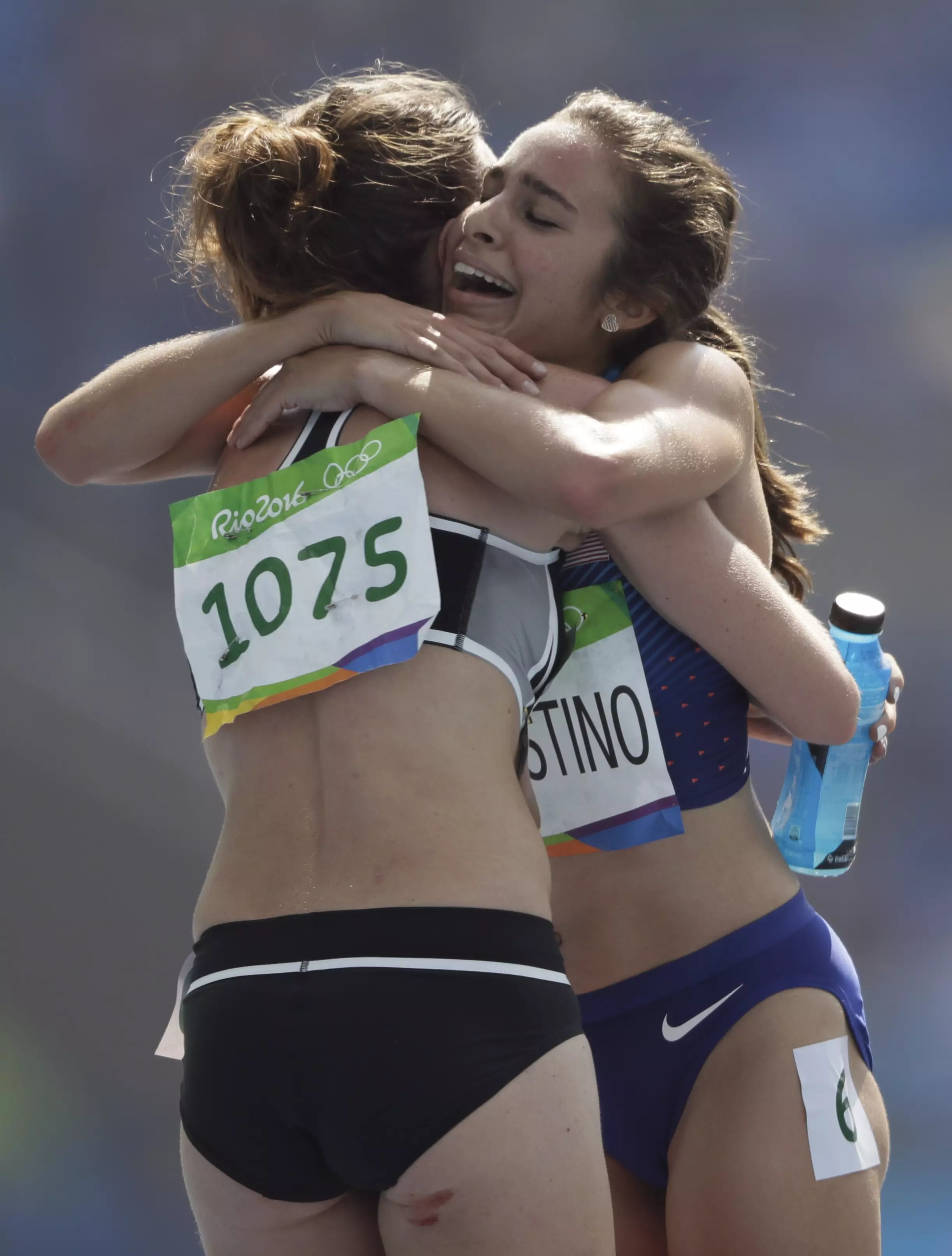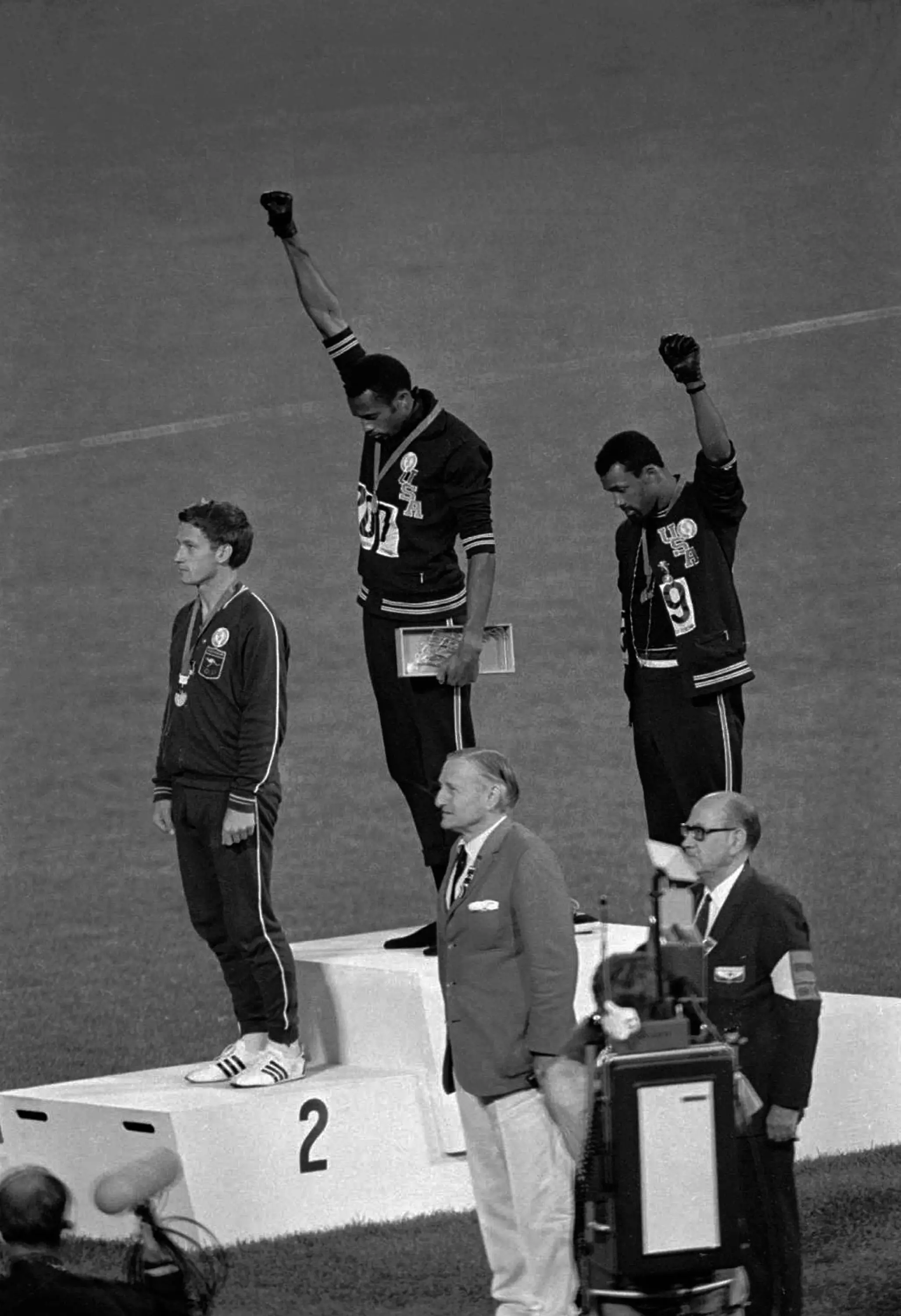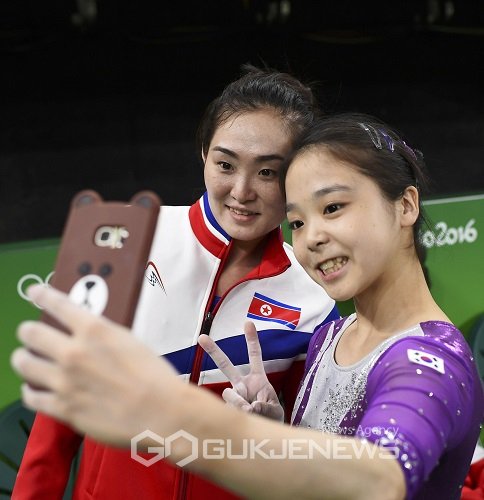
Featured image credit: PA Images
The Olympics are defined by moments that demonstrate not just the power of sport, but the power of humanity.
Maybe this is why the Games, which only come about once every four years, feel like more than a sporting contest. In certain moments, the contest can feel like a showcase for the best of humankind.
On Monday we witnessed another moment that defined the Olympic spirit, with a runner pausing her race in the 5,000 metres to help a rival who had injured her ankle.
New Zealand's Nikki Hamblin and American Abbey D'Agostino both tumbled to the floor more than half way into the race at Rio. On television it seemed like D'Agostino had clipped her competitor's heel, leading to them each losing their balance.
D'Agnostino suffered an ankle injury in the collision, but Hamblin - rather than attempting to catch up with the pack - instead tried to help her continue.

Hamblin and D'Agostino embrace. Credit: PA
Advert
Even when D'Agostino collapsed telling her rival to carry on running, Hamblin refused and helped her former rival cross the line, meaning both athletes finished the race, but far behind other runners.
This isn't the first moment of its kind.
At the 1992 Barcelona Olympics, British runner Derek Redmond was competing in the 400 metres semi-final when he tore his hamstring. He attempted to finish the race on his own, but as he struggled his father ran onto the track to help him make that finishing line.
Advert
Credit: BBC
Redmond managed to complete the race and the two received a standing ovation in a moment that will go down in Olympic history. Technically his time did not count, but it was the spirit that mattered.
Going back further to the 1968 Olympics, African-American athletes Tommie Smith and John Carlos chose to use their moment as gold and bronze medal winners in the 200 metres to take a stand against racism and social deprivation in America.

Credit: PA
Advert
As they turned on the podium to face their flags and to hear the American national anthem - The Star-Spangled Banner, the two athletes raised a black-gloved fist, and kept them raised until the anthem had finished.
The two US athletes received their medals shoeless, wearing only black socks, to represent black poverty. Smith wore a black scarf around his neck to represent black pride. Carlos had his tracksuit top unzipped to show solidarity with all blue collar workers in the US and wore a necklace of beads.
Describing why he wore the beads, Carlos said: "Those were for those individuals that were lynched, or killed and that no-one said a prayer for, that were hung and tarred. It was for those thrown off the side of the boats in the middle passage."
The moment focused global attention on human and black right at a time of social upheaval and a change in western attitudes towards systemic racism.
Like other Olympics that came before it, Rio 2016 has provided hundreds of millions of viewers with some very special moments. In the first few days of the Games we were blessed with an iconic picture that shows how, despite what political divisions there might be across the world, we're all just humans really.
Lee Eun-ju of South Korea and Hong Un-jong of North Korea - two countries that are technically still at war - took a quick smiling selfie during the training period before the start of the Games.
Inspirational. And in my opinion, this has been a truly fantastic Games.
Advert
Words by James Dawson
Featured Image Credit:

